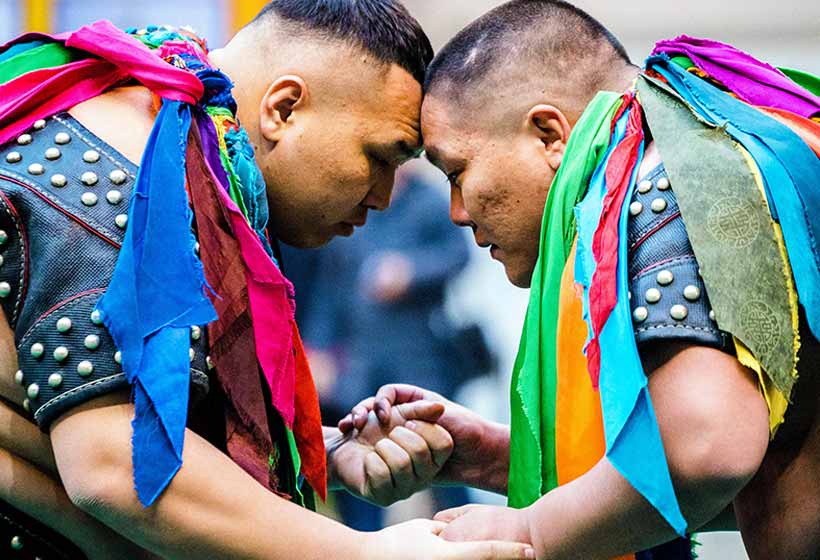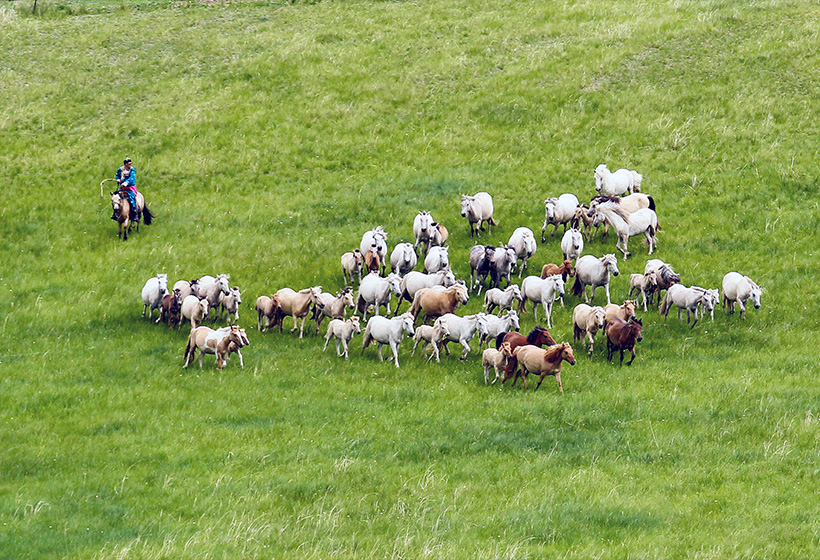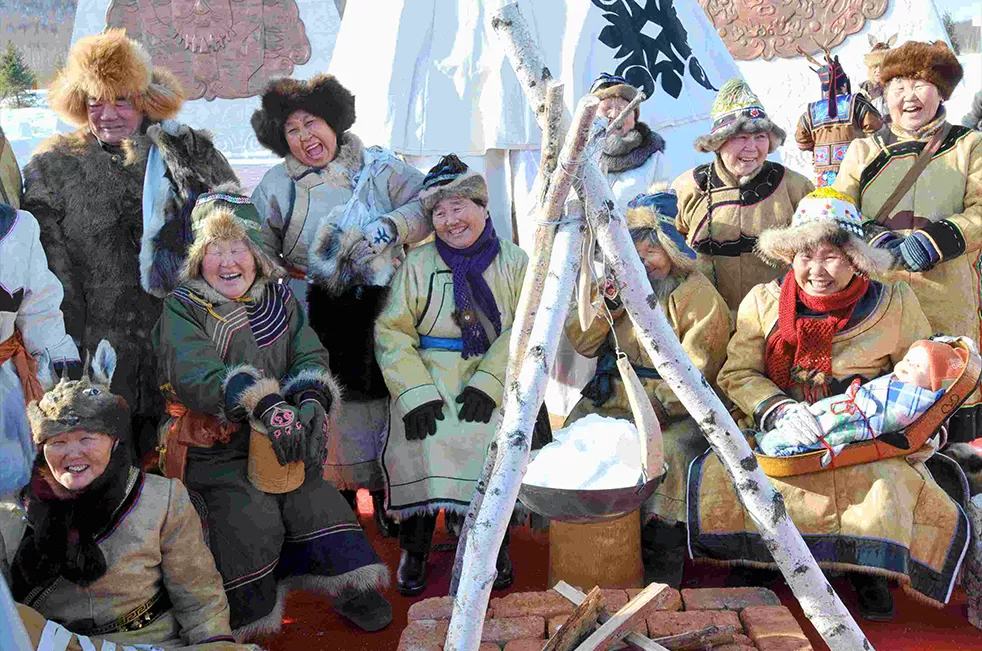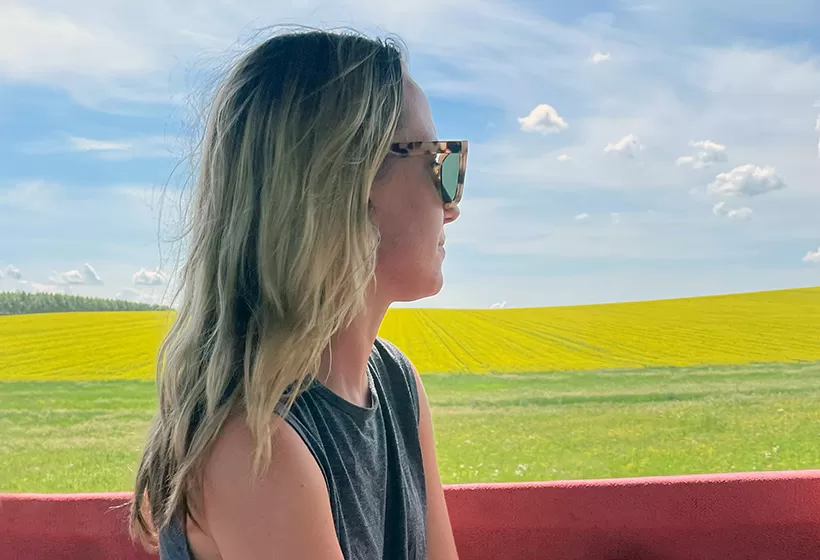Short Introduction to Hulunbuir Local Culture: History, Nation, Diet, Clothing, etc
Hulunbuir, named after Hulun Lake and Buir Lake, is known as the “Charming Grassland Capital.” This vast land is not only the cradle of the Mongolian people, but also the birthplace of Genghis Khan, who rose to power here and established the mighty Mongol Empire. It is home to the Hulunbuir Grassland, one of the world’s four largest grasslands, and Manzhouli, China’s largest land border port, showcasing its unique geographical and cultural significance.
Hulunbuir is also the origin of many ancient civilizations and nomadic peoples. Tribes such as the Donghu, Xiongnu, Xianbei, Shiwei, Uighurs, Turks, Khitan, Jurchen, and Mongols once thrived here. Regarded by historians as the cradle of China’s northern nomadic cultures, Hulunbuir holds a prominent place in world history. Annual events like the Nadam Fair, traditional Mongolian weddings, and Morin Khuur (horsehead fiddle) performances vividly reflect the region’s rich and colorful cultural heritage.
Brief History
There is another legend about the origin of the name "Hulunbuir." Long time ago, on the grasslands, there was a couple named Hulun and Buir. To save the grasslands, they fought bravely against the evil warlord Mangus. In the end, they transformed in to Hulun Lake and Buir Lake. Thus, the name "Hulunbuir" also symbolizes the courage and love of this devoted couple.
Twenty to thirty thousand years ago, ancient humans—known as the Zhalainuoer people—thrived around Hulun Lake, giving rise to the primitive culture of Hulunbuir.
In 209 BCE, the powerful Xiongnu conquered the Donghu tribe and unified the northern grasslands. The Hulunbuir region became part of the territory governed by the Left Wise Prince, one of the three divisions of the Xiongnu.
In the 1st century CE, the Tuoba Xianbei established the Northern Wei Dynasty, the first regime in Chinese history founded by an ethnic minority.
In the 13th century, Genghis Khan unified the Mongolian Plateau. In 1214, he granted most of the Hulunbuir Grassland to his eldest brother, Jochi Khasar. The ancient city of Heishantou in present-day Eerguna was his former capital.
After the establishment of the Qing Dynasty, Hulunbuir became an important part of Inner Mongolia. The Hulunbuir Deputy Governor-General was established to guard the border and made contributions to defending against the invasion of Tsarist Russia, ensuring the smooth operation of the post stations, and maintaining tranquility in the border.
During the Republic of China period, the western part of the Greater Khingan Range (Lingxi) implemented local autonomy from 1912 to 1920, separating from Heilongjiang Province. After 1920, it was placed back under the jurisdiction of the Military Governor of Heilongjiang. During the Japanese occupation of Northeast China, the eastern part (Lingdong) was designated as Xing'an East Province, and the western part (Lingxi) as Xing'an North Province—both directly governed by the puppet state of Manchukuo.
In October 1946, it was renamed the Hulunbuir Autonomous Government. On February 21, 1957, the People's Government of Hulunbuir League was renamed the People's Committee of Hulunbuir League. After multiple rounds of administrative reorganization, the prefecture-level Hulunbuir City was officially established on October 10, 2001.
Ethnic Culture
Hulunbuir is a melting pot of ethnic cultures and traditions, home to over 40 ethnic groups including Mongols, Ewenki, Daur, Oroqen, and Han Chinese. Among them, the Mongols, Ewenki, Daur, and Oroqen are the most representative ethnic groups. Their traditional lifestyles, festivals, and sports all reflect distinct cultural characteristics.
Ethnic
Mongol
 Mongols
MongolsThe Mongols are one of the major ethnic minorities in Hulunbuir, mainly distributed along the Morigele River, Hailar River, and Ergun River basins. Their cultural traditions include the “Three Manly Skills” — wrestling, archery, and horse racing — as well as traditional festivals such as Naadam and the Aobao Worship Ceremony. The traditional Mongolian dwelling is the yurt, which is simple in structure and easy to dismantle and relocate, reflecting the nomadic people’s adaptation to and reverence for nature.
Ewenki
 The Evenki People
The Evenki PeopleThe Ewenki people are mainly distributed in Hulunbuir City and Heilongjiang Province, with a total population of fewer than 40,000 across China. Over 20,000 Ewenki currently live in Hulunbuir, where they are known as the "People on the Back of Reindeer." Renowned for reindeer herding, the animals are not only vital to their livelihood but also serve as cultural and auspicious symbols. The traditional Ewenki dwelling is the cuoluozi—a conical, temporary shelter. The Ewenki traditionally follow Shamanism and Tibetan Buddhism, with a deep reverence for nature. Their spiritual practices often include animal worship, totemism, and ancestor worship.
Ethnic clothing
The winter clothing of the Ewenki people is mainly made of leather, such as roe deer skin, moose skin, deerskin, sheepskin, etc. Women's robes are mainly made of cloth.
Ethnic Language
The Ewenki people speak the Oroqen language, which belongs to the Tungusic branch of the Manchu-Tungusic language family under the Altaic language group. They do not have a written script of their own.
Daur
The Daur people are mainly distributed in the Inner Mongolia Autonomous Region and Heilongjiang Province, and they are one of the "Three Minorities" in Hulunbuir. Traditional sports activities of the Daur people include hockey, wrestling, and neck strength contests. The Morin Dawa Daur Autonomous Banner is the primary settlement area for the Daur people and is known as the "Hometown of Hockey." The Daur people traditionally follow Shamanism.
Ethnic clothing
Daur men wear cotton clothes in summer, along with a long robe, a white cloth head wrap, and a straw hat. In winter, they wear fur hats. Daur women wear long robes without waistbands and do not wear short garments. In winter, both men and women wear "Jikami" (leather boots), and women’s long robes are primarily blue, while in summer, they prefer to wear white socks and flower-patterned shoes.
Ethnic Language
The Daur people have their own language, called Daur, which belongs to the Mongolic branch of the Altaic language family. They do not have a written script of their own and primarily use Chinese, Manchu, Mongolian, and Kazakh scripts.
Ewenchen (Oroqen)
 Oroqen people
Oroqen peopleThe Ewenchen (Oroqen) people have a population of around 9,000, making them one of the smallest ethnic minorities in China. They primarily rely on hunting for their livelihood, hunting animals such as roe deer, deer, elk, wild boar, and bears, as well as small animals and birds, adapting to the cold climate and hunting lifestyle. The Ewenchen people follow Shamanism, which is characterized by a belief in the natural world and the notion that all things possess a spirit. This belief manifests in practices such as nature worship, totemism, and ancestor worship.
Ethnic clothing
The traditional clothing of the Oroqen people is made from roe deer hides, including garments such as roe deer skin coats and hats. These are sewn together with fine threads made from roe deer sinew. The garments are typically long robes with a right-side overlap, adorned with decorative patterns such as "bow-shaped," "antler-shaped," and "cloud-roll-shaped" designs. These designs not only add aesthetic appeal but also ensure the clothing is warm and durable.
Ethnic Language
The Oroqen language belongs to the Altaic language family, specifically the Tungusic branch of the Manchu-Tungusic group.
Traditional Festival and Special Custom
 Nadam Fair
Nadam FairThe Nadam Fair: “Nadam" is a Mongolian term that means "entertainment" or "games," symbolizing the joy of a bountiful harvest. Held in July and August, the Nadam Fairis a major cultural celebration for Mongolians. As a tradition, during the peak of livestock's health, this event celebrates harvests and features exciting activities such as horse racing, wrestling, archery, and captivating song and dance performances. The festival showcases a dazzling display of strength and beauty, passion and speed, as well as a battle of physical endurance and wit.
The Serbin Festival(on June 18th) is a traditional festival of the Ewenki ethnic group, held every year on June 18th, symbolizing "joy and harmony." During the festival, Ewenki men, women, and children gather together to hold a variety of celebratory activities, such as song and dance performances and bonfire parties, to express their love for nature and life.
The Mikolu Festival (celebrated on the 22nd day of the 5th lunar month) is a harvest festival of the Ewenki ethnic group, popular in the Chenbarhu Banner of Inner Mongolia. During the festival, people visit each other and hold feasts, song and dance performances, and other activities to celebrate the harvest.
The Yimu'e Festival (also celebrated on May 22nd) is a unique festival in Hulunbuir, Inner Mongolia. The Mongolian name means "harvest." This festival marks the completion of the spring lambing season for livestock on the grasslands. Shepherds celebrate the harvest with activities such as wrestling and horse racing.
The ritual of worshiping the Aobao(on the 13th day of the 5th month of the lunar calendar each year)is one of the traditional customs of the Mongolian people, reflecting their reverence for nature. It involves piling stones on mountain tops or hills and conducting sacrificial ceremonies to pray for a good harvest and safety.
The Bonfire Festival (celebrated every year on June 18th) is a traditional festival of the Oroqen ethnic group. The Oroqen people have a long-standing reverence for the fire god, believing that fire has the power to ward off evil and purify. On this day, the Oroqen people light bonfires and celebrate with singing and dancing.
Diet Style and Culinary Tastes
 Chanasan Makh Making
Chanasan Makh MakingThe culinary culture of Hulunbuir is deeply influenced by its geographic environment and ethnic traditions. In this magical land, various ethnic groups, including the Mongols, Ewenki, Oroqen, Daur, and Russians, coexist harmoniously, blending their dietary habits and cultural traditions.
The diet style and culinary tastes in Hulunbuir reflect the region's nomadic and pastoral lifestyle, with a strong emphasis on meat, particularly lamb, beef, and various dairy products. Traditional dishes often feature roasted or stewed meats. From beef and mutton on the grassland to special snacks and traditional foods unique to ethnic minorities, each region has its own unique flavor, such as rich Mongolian milk tea, authentic hand-held meat, roasted whole lamb, oat noodle dumplings, fried chive boxes, and a variety of delicious dairy products.
Read More local Food-Restaurants in Hulunbuir »
Cultural Heritage
As an important cradle of northern Chinese frontier culture, Hulunbuir boasts a rich and diverse cultural heritage that reflects a deep historical legacy and the integration of multiple ethnic traditions. Its heritage spans both tangible and intangible cultural domains, with representative elements including Mongolian throat singing (Khoomei), the Morin Khuur (horsehead fiddle), the vibrant Andai dance, and the Nadam Festival.
Notable preserved cultural treasures include the mythology of the Aoluguya Ewenki people, the Daur people's Mukulian (jaw harp music), the Zandaren folk songs of the Oroqen ethnic group, Russian folk dances, and the birch bark crafting techniques, all of which contribute to the region’s unique and colorful cultural landscape.
Customize Your Unique Hulunbuir Tour

If you are interested in one of the Hulunbuir itineraries mentioned above, please contact us, and we will be happy to customize it and provide a quote tailored to your preferences.
Alternatively, if you would like to customize your Hulunbuir Tour, please visit our inner-Mongolia Tour Customized Center. We assure you that you will receive a reply within 24 working hours.
Informative Articles for Hulunbuir  Mongolian wrestling
Mongolian wrestling
 Mongolian wrestling
Mongolian wrestling- Hulunbuir Travel Guide: attractions, weather, food, culture, tours, etc.
- Hulunbuir Travel itinerary for your reference
- Top attractions: well-selected top attractions in Hulunbuir
- Brief introduction to the Inner Mongolia local culture
- Unique perspective: best interesting things to do
- Interesting cultural experiences and outdoor activities to rich your trip
- Top destinations: best places to visit in Hulunbuir
- When is the best time to travel to Hulunbuir in Inner Mongolia
- Local food: what to eat while traveling in Hulunbuir
- Luxury hotels: where to stay in Hulunbuir
- Inner Mongolia Travel Advisory
- Customizable private Inner Mongolia tours
GREAT FAMILY CHINA TOUR
JULY 2024 We wanted to thank Grace at China Culture tour for organizing a great tour of China. We enjoyed our Beijing - Xian-Chengdu -Guilin -Yangshuo - Shanghai trip. Our local guides Bruce in Beijing, Susan in Xian, Jane in Chengdu, Mike in Guilin and Mary in Shanghai took care of us…read more details »
Teng Han L from SINGAPORE
Ready to Create a Unique Dream Travel?


